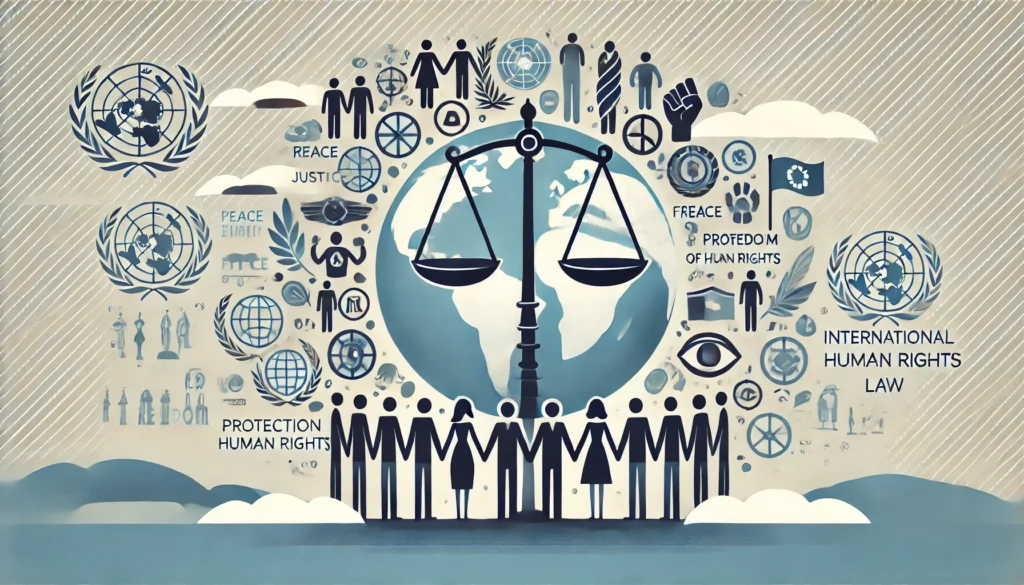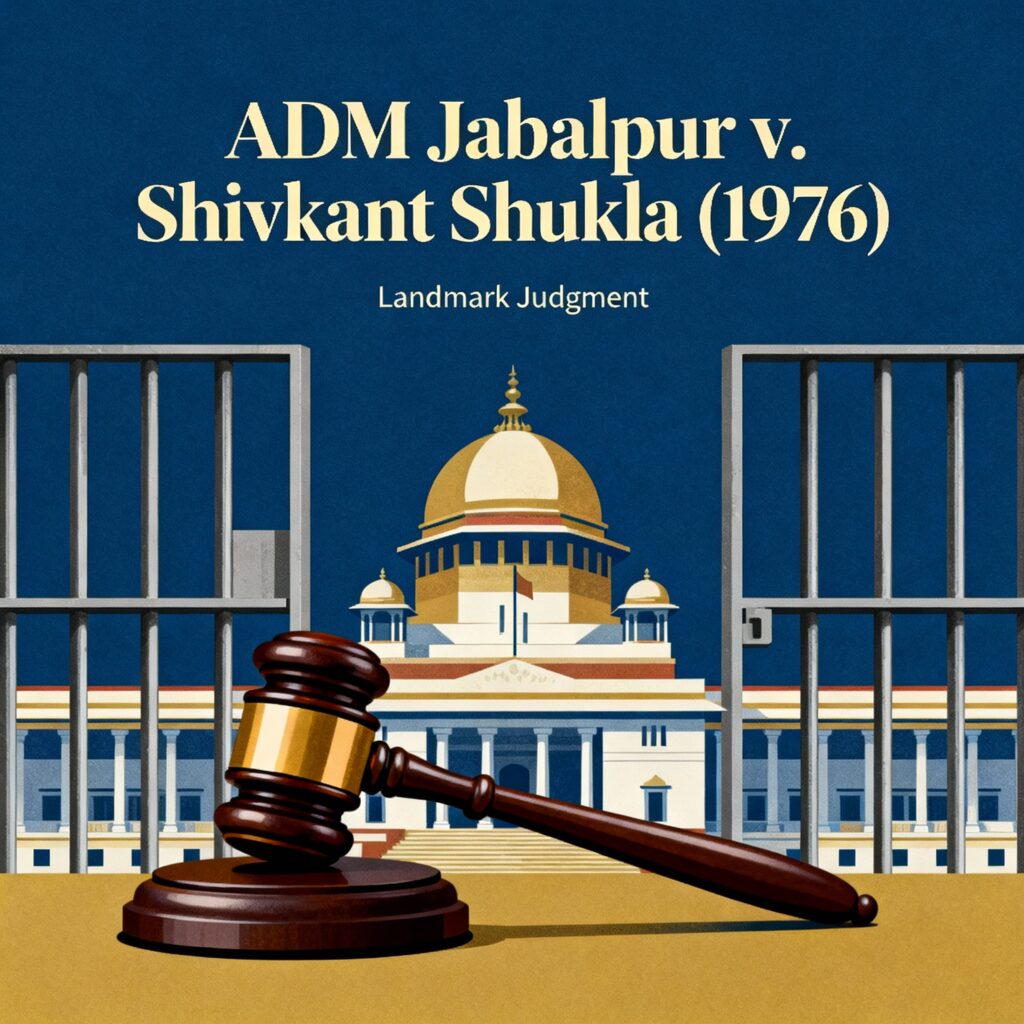Published On: 30th October, 2024
Authored By: Asmat Ayyoob
Jamia Millia Islamia
INTRODUCTION
In the case Shreya Singhal v. Union of India (2015) the highlighted key legal provision was section 66A of the Information Technology Act of 2000, this key provision was challenged by a law student in the court expressing that this provision is against the constitutional validity and has a vague language which in case of interpretation is often misused. This case in short talks about the constitutional validity of that section as well as reasonable and fair restrictions that can be applied to the right of freedom of speech and expression. This case can also be called a precedent for protecting free speech and expression of the people of the nation even during the digital age.
FACTS OF THE CASE
In Shreya Singhal v. Union of India (2015), a law student named Shreya Singhal, filed a Public Interest Litigation (PIL) in India’s Supreme Court, challenging the constitutional validity of Section 66A of the Information Technology Act of 2000. Section 66A made sending “offensive” messages via electronic communication criminalized, punishable by up to three years in prison.
The provision drew widespread criticism after several cases in which people were jailed for online statements considered “offensive” or “annoying.” A major event highlighted the arrest of two women in Mumbai for a Facebook post that questioned the city’s shutdown following the death of Bal Thackeray, a famous political leader. This particular instance, among others, ignited a nationwide debate about the application of Section 66A which restricts free speech and expression.
Shreya Singhal’s petition stated that Section 66A was vague, excessively broad, and allowed for arbitrary enforcement, infringing on the basic right to free speech and expression granted by Article 19(1)(a) of the Indian Constitution. The petition questioned whether the terms used in Section 66A, such as “offensive,” “menacing,” and “annoying,” were defined clearly enough to prevent misuse, and whether the restrictions imposed were reasonable under Article 19(2), which allows for restrictions on free speech for specific purposes such as maintaining public order or decency.
KEY LEGAL ISSUES OF THE CASE
Section 66Aof the IT Act, 2000:-
“Any person who sends, by means of a computer resource or a communication device, –
any information that is grossly offensive or has a menacing character; or
any information which he knows to be false, but for the purpose of causing annoyance, inconvenience, danger, obstruction, insult, injury, criminal intimidation, enmity, hatred, or ill will, persistently makes by making use of such computer resource or a communication device; or
any electronic mail or electronic mail message for the purpose of causing annoyance or inconvenience or to deceive or to mislead the addressee or recipient about the origin of such messages,
shall be punishable with imprisonment for a term which may extend to three years and with fine.”
CONSTITUTIONAL VALIDITY OF SECTION 66A OF IT ACT,2000
– Whether Section 66A of the Information Technology Act, 2000, violates the fundamental right of free speech and expression guaranteed by Article 19(1)(a) of the Indian Constitution.[1]
VAGUENESS AND OVER-BROADNESS OF THE SECTION
Whether the terms used in Section 66A, such as “offensive,” “menacing,” and “annoying,” were so vague and overbroad that they led to arbitrary enforcement and, consequently, infringed on the right to free speech.[2]
REASONABLE RESTRICTIONS UNDER ARTICLE 19(2)
Whether the restrictions imposed by Section 66A could be justified as “reasonable restrictions” under Article 19(2) of the Constitution, which allows limitations on free speech in the interest of public order, decency, morality, and other specified grounds.[3]
ARBITRARY RESTRICTIONS
The restrictions imposed by the sections are arbitrary and disproportionate in nature and they have faced failure to meet the constitutional standards of free speech and expression in fair means.[4]
BALANCE BETWEEN FREEDOM OF SPEECH AND EXPRESSION OF THE PUBLIC AND LAW AND ORDER IN THE PUBLIC
Does fair speech and expression of people restrict the government from maintaining public order in society? Wouldn’t that curb that idea also curb the freedom of speech and expression of people vested in Article 19(2) of the constitution of India?[5]
Arguments in Shreya Singhal v Union of India
Unconstitutionality of Section 66A of the Information Technology Act, 2000
PETITIONER’S ARGUMENT
- Vagueness and Overbroadness: The petitioners argued that Section 66A was unconstitutionally vague and overbroad, as it did not clearly define the offenses it alleged to criminalize. The section criminalized any person who sent information that was “grossly offensive” or of a “menacing character,” which the petitioners contended could be interpreted in multiple ways and was, therefore, susceptible to be misused by the authorities. The vague terminology of the section violated the right to freedom of speech and expression guaranteed under Article 19(1)(a) of the Constitution of India. The petitioners relied on the test of vagueness, as established in former cases like A. Abbas v Union of India and Kartar Singh v State of Punjab.[6]
- Chilling Effect on Freedom of Speech: It was argued by the petitioner that the provision created a chilling effect on free speech, as citizens would refrain from expressing themselves for fear of being prosecuted under the vaguely worded law. This chilling effect was inconsistent with the democratic values upheld by the Constitution. The petitioners cited Romesh Thappar v State of Madras and Brij Bhushan v State of Delhi to emphasize that any restriction on free speech must be reasonable and clear.[7]
- Lack of Clear Distinction of Offense and Non-Offense: The petitioners argued that Section 66A did not distinguish between offensive speech and protected non-offensive speech, thereby they have been criminalizing speech that should have been constitutionally protected. The section failed to differentiate between speech that incited violence or was intended to harm and speech that was merely unpopular or controversial. This lack of distinction was argued to be a direct violation of Article 19(2) of the Constitution, which provides specific grounds on which restrictions on free speech may be imposed.[8]
Respondent’s Arguments (Union of India):
- Public Order and Decency: The Union of India defended Section 66A, arguing that it was necessary to maintain public order, decency, and morality in the digital space. The government contended that the internet posed unique challenges, and Section 66A was a necessary tool to combat misuse, including cyberbullying, defamation, and threats to public safety. The government cited cases such as Statethe of Bihar v Shailabala Devi to support the necessity of maintaining public order.[9]
- Reasonable Restriction under Article 19(2): The government argued that Section 66A was a reasonable restriction on the right to freedom of speech and expression under Article 19(2) of the Constitution. It was argued that the law was intended to prevent the misuse of the Internet for activities that could harm individuals and society. The respondents cited Shivani Kapoor v Madhya Pradesh and S. Rangarajan v Jagjivan Ram to support the contention that reasonable restrictions on free speech are permissible under the Constitution.[10]
- Precedent of Legislative Power: The government also contended that the judiciary should exercise restraint in striking down legislative provisions, especially when they have been enacted to address emerging challenges in society, such as those which are posed by the internet. The respondents cited A.K. Roy v Union of India to argue that the judiciary should not interfere with the legislative wisdom unless a clear violation of constitutional principles was established.[11]
CONCLUSION
The case of Shreya Singhal v. Union of India (2015) is a landmark judgment that profoundly impacted the legal landscape of free speech and expression in India. The Supreme Court’s decision to strike down Section 66A of the Information Technology Act, 2000, marked a significant victory for the protection of constitutional rights, particularly the right to freedom of speech and expression under Article 19(1)(a). The Court recognized the inherent vagueness and over-broadness of Section 66A, which allowed for arbitrary interpretation and enforcement. The terms “grossly offensive,” “menacing,” and “annoying” were not sufficiently defined, leading to a chilling effect on free speech. Citizens were deterred from expressing their opinions online due to the fear of prosecution, thereby undermining the democratic principles enshrined in the Constitution. The judgment emphasized that any restriction on free speech must be clear, reasonable, and proportionate, aligning with the constitutional framework.
Moreover, the Court rejected the government’s argument that Section 66A was necessary to maintain public order and decency in the digital space. While acknowledging the challenges posed by the internet, the Court held that the provision was not a reasonable restriction under Article 19(2) and failed to meet the constitutional standards required to curtail free speech. The ruling reaffirmed the judiciary’s role in safeguarding individual rights against legislative overreach, particularly when such legislation has the potential to infringe upon fundamental freedoms. In conclusion, the ‘Shreya Singhal’ case set a precedent for protecting free speech in the digital age, ensuring that laws governing online communication must be precise, fair, and consistent with the constitutional guarantee of free expression. The decision remains a cornerstone in the ongoing discourse on the balance between regulation and freedom in the Internet era.
Reference(s):
[1] Shreya Singhal v Union of India (2015) 5 SCC 1.
[2] K.A. Abbas v Union of India AIR 1971 SC 481; S. Khushboo v Kanniammal (2010) 5 SCC 600; Shreya Singhal v Union of India (2015) 5 SCC 1.
[3] Constitution of India 1950, art 19(2); Romesh Thappar v State of Madras AIR 1950 SC 124; Shreya Singhal v Union of India (2015) 5 SCC 1.
[4] State of West Bengal v Subodh Gopal Bose AIR 1954 SC 92; S. Rangarajan v P. Jagjivan Ram AIR 1989 SC 190; Shreya Singhal v Union of India (2015) 5 SCC 1.
[5] Shreya Singhal v Union of India (2015) 5 SCC 1; A.K. Gopalan v State of Madras AIR 1950 SC 27; State of Bihar v Shailabala Devi AIR 1952 SC 329.
[6] K.A. Abbas v Union of India AIR 1971 SC 481; Kartar Singh v State of Punjab (1994) 3 SCC 569.
[7] Romesh Thappar v State of Madras AIR 1950 SC 124; Brij Bhushan v State of Delhi AIR 1950 SC 129.
[8] Constitution of India 1950, art 19(2); S. Rangarajan v P. Jagjivan Ram AIR 1989 SC 195.
[9] State of Bihar v Shailabala Devi AIR 1952 SC 329.
[10] Shivani Kapoor v Madhya Pradesh AIR 1963 SC 1279; S. Rangarajan v Jagjivan Ram AIR 1989 SC 195.
[11] A.K. Roy v Union of India AIR 1982 SC 710.



